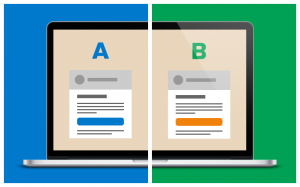You are a small business trying to generate leads to turn into new paying clients. You think you are doing everything you need to do, but are you really? Are you utilizing e-mail marketing? Are you creating an e-mail list for your company? If so, are you sending e-mails the right way?
10 Best Practice Tips for E-Mail Marketing Campaigns
E-Mail Marketing Stats
- 65% of retailer subscriber lists have never purchased from them
- $108.77 – Average order value from email, which is a decline from 2016
- 12% – Conversion rate of anniversary and birthday related campaigns
- 53% – The increase in conversion rates for automated emails versus not
- 55% – Mobile opens of e-mail campaigns compared to desktop
- 205 Billion – Number of emails sent and received per day
- 8am-3pm – Peak hours for shopper engagement
- 72% of consumers say e-mail is their number once choice in brand communication
- 29% more readers open e-mails with personalized content
- 24 hours – Amount of time that the majority of “second sales” are made for a retailer
– Website Magazine and AWeber
1. Make sure your e-mails are legally compliant
The Federal Can-Spam Act of 2003 created a set of standards for sending commercial email, which impose laws on using deceptive marketing methods through misleading headings and content. You are legally required to follow these basic rules for your commercial email marketing. The three basic rules are:
- Unsubscribe Compliance – A visible way to unsubscribe from all commercial emails. Most commercial platforms such as Mailchimp or Constant Contact have these automatically added.
- Content Compliance – Accurate “From” lines, relevant subject lines, a legitimate physical address and a label if the content is 18+. You can’t try to manipulate your commercial emails to be from a different email address or false advertisement in the subject line or content
- Sending Behavior Compliance – The content must follow regular e-mail formats, such as not having a false header, cannot be sent through an open relay, should contain at least one sentence, etc.
Without following the Can-Spam act, you are at risk of criminal indictment for fraud and criminal conspiracy.
2. Track how your e-mail campaigns are performing
How do you know if your e-mails are being read or even opened? Tracking and reviewing data reports after each email is crucial to improving your e-mail marketing campaigns. Use this data to determine whether your incentives are being well-received, whether your subject lines are enticing, and whether your customers care what you are talking to them about. Then you can adjust as needed and watch your data improve over time.
3. Do A/B testing
 Your clients will respond to subject lines differently. Most e-mail marketing platforms (like Mailchimp) allow you to do what is called A/B Testing, meaning testing A versus B to see which performs better. Once your e-mail has been sent out with the version A and version B subject lines, your platform will keep track of which is performing better by looking at the most opens or clicks. Once it has enough data, it will automatically send the remaining emails to the better performing content. This is an easy way to get a better return on your e-mail rather than just assuming you know what will entice your customer the most. Try putting your call to action button at the top versus bottom and see which performs better.
Your clients will respond to subject lines differently. Most e-mail marketing platforms (like Mailchimp) allow you to do what is called A/B Testing, meaning testing A versus B to see which performs better. Once your e-mail has been sent out with the version A and version B subject lines, your platform will keep track of which is performing better by looking at the most opens or clicks. Once it has enough data, it will automatically send the remaining emails to the better performing content. This is an easy way to get a better return on your e-mail rather than just assuming you know what will entice your customer the most. Try putting your call to action button at the top versus bottom and see which performs better.
4. Automate your list growing process
Wherever you are interacting with clients, you should always be collecting their e-mails. Whether this is in-store with a simple paper sign-up list, or through your website purchase form and contact forms. There should never be an opportunity collect an e-mail address that you aren’t utilizing. Automating the process makes it even easier by having your online forms automatically integrate with the API of your mailing list software. This takes the task off of you to import e-mail addresses that you don’t have to.
5. Utilize automated follow-up e-mails
Whether you send a welcome e-mail to new sign-ups, or you are following up on a recent purchase with a coupon towards their next purchase, make sure you are keeping your business in the minds of your customers. Setting up some automated follow-up emails that make sense and aren’t bombarding your list is a great way to stay visible behind the scenes.
6. Divide your lists into appropriate groups
Not all of your customers are the same, and you don’t acquire them all the same way. You may have a list of leads that aren’t yet customers that you may speak to different than those who you have already established as a client. When you are able, divide your lists up appropriate between leads, returning customers, new customers, etc., and market your emails according to your relationship with them. This will make it feel like you are paying attention to them, and in return you will stand out more to them.
7. Provide Incentives for your e-lists
Would you sign up for an e-list just to hear a company talk about how great they are on a regular basis? Probably not. So why do so many companies do just that? Your e-mail marketing should be tailored to your clients, almost like a gift for them. Providing coupons, early access to information, e-mail only specials and similar incentives will encourage users to not only sign-up for your e-list, but share it with their friends too.
8. Create an action that you want a client to complete in each e-mail
 Your email should have a purpose, as we’ve mentioned above. However, you should also direct your customer into an action. Is your goal to get them to go to your website to read a blog post? Are you trying to get them to buy a new product? Create an easy button or link for them to get where they need to go without any hassle.
Your email should have a purpose, as we’ve mentioned above. However, you should also direct your customer into an action. Is your goal to get them to go to your website to read a blog post? Are you trying to get them to buy a new product? Create an easy button or link for them to get where they need to go without any hassle.
9. Stop using “noreply” e-mail addresses
You want to e-mail your clients, and you want them to read the emails you send, but you don’t want them to be able to reply to you? That’s a bit one-sided, isn’t it? Allow your customers to reply to you, even if you have to set up a separate e-mail address to do so in order to prevent your main e-mail address from being overwhelmed with responses. You owe it to your clients to answer questions if you want them to remain a customer.
10. Design your content with your customer in mind
Don’t just send a big wall of text, no one is interested in reading that. Break up your content with images, lists, data, even personalized or funny quips that keep your reader engaged. Allow them to easily jump through sections and still get all of the information they need quickly and easily without boring them with platitudes. Also keep in mind that the majority of your readers will be viewing your e-mail on their mobile device. Having to scroll through paragraphs of content in order to reach their desired section or call-to-action will frustrate your user.
In Conclusion
You don’t want to focus on just gathering leads, but also retaining the clients you have. Pay attention to their habits and desires, keep your brand fresh in their minds, adjust your e-mails as needed, and treat the e-mails with your customers like a conversation.




